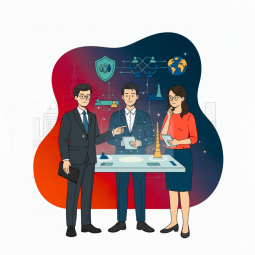The promise of artificial intelligence and machine learning has captured the imagination of social impact organisations worldwide, but for NFPs and NGOs in the Asia Pacific region, the path to implementing AI solutions isn't always clear due to differing legislation, the breadth of choice of technology and concerns with the safety and ethics of using AI, both personally and professionally.
This guide offers a human-centered approach to help you navigate this journey, ensuring that the technology serves your mission, while respecting the diverse communities you support.
1. The discovery phase
Understanding your community
Before exploring AI solutions, it is important to take time to truly understand your community's needs, challenges, and aspirations. Start the process by communicating with your stakeholders and learning their challenges. AI has the potential to solve many problems, but the root of these problems should be clearly identified first.
Key steps
-
Conduct community consultations
-
Document pain points and challenges
-
Identify cultural considerations
Problem definition through a human lens
Once you've gathered community insights, it's time to define the problems you're trying to solve. This isn't about listing technical requirements – it's about understanding the very real human impact of current processes and then imagining how they could be improved.
Key questions
-
What daily challenges do they face in accessing these services?
-
Where do current processes fall short?
-
What would meaningful improvement look like from their perspective?
-
How do cultural and social factors influence their interaction with technology?
Organisational capacity
While implementing AI solutions requires initial investment in resources and capabilities, the long-term benefits can significantly improve your organisation's impact. It is critical to ensure that you have the internal capacity to support any solution that you are developing.
Key steps
-
Audit existing technical capabilities and data resources
-
Assess staff skills and training needs
-
Research potential partnership opportunities
-
Develop a phased capacity building plan
Ethical considerations
Ethics in AI isn't a checkbox to tick – it's a continuous conversation that should permeate every aspect of your project. Consider the importance if informed consent must be balanced with accessibility.
Key questions to ask
-
How do you explain AI systems to communities with varying levels of technical understanding?
-
How do you ensure data privacy while maintaining service effectiveness?
-
Have we tested any Generative AI tools for accuracy?
2. Designing your AI solution
The power of co-design
Co-design isn't just a workshop methodology – it's a mindset that places community members at the heart of the solution development process. Bring together diverse voices: beneficiaries, staff, technical experts, and other key stakeholders. Create an environment where everyone feels empowered to contribute, regardless of their technical expertise.
Key steps
-
Identify and invite key stakeholders
-
Use AI tools to facilitate workshops (where applicable)
-
Document and synthesise all feedback
-
Create shared vision and success metrics
Prototyping with purpose
The prototyping phase is where ideas begin to take shape but remember – perfect is the enemy of good. Start with simple prototypes that demonstrate core functionality. You can even use AI tools to accelerate the prototyping process: generate multiple design variations, create quick translations, or simulate user interactions.
Key steps
-
Create low-fidelity prototypes
-
Test core functionality with users
-
Iterate based on feedback Use AI to speed up prototyping (where applicable)
3. Building and deploying
Building and testing
The building phase is where technical expertise meets community insight. Start small but think big – your initial implementation should focus on core functionality that delivers immediate value while laying the groundwork for future expansion.
Key steps
-
Build a minimum viable product
-
Test across diverse user groups
-
Document technical requirements
-
Establish support processes
Continual testing and feedback
Regular testing during the build and deployment phase is essential to ensure your AI solution is effective, accessible, and culturally appropriate. Implement a comprehensive testing strategy that considers various scenarios, edge cases, and potential biases. Establish clear metrics for success that go beyond technical performance to include user satisfaction, accessibility, and real-world impact. Remember that testing should be an ongoing process, not a one-time event, as communities' needs and technological capabilities evolve over time.
Key understandings
-
Cultural contexts
-
Language groups
-
Technology access levels
-
Age groups
-
Ability levels
Deployment and scale
Deployment isn't the end of the journey. Take a phased approach that allows for continuous feedback and adjustment. Build support systems that empower your organisation and beneficiaries to embrace and effectively use the new technology.
Key steps
-
Plan phased rollout
-
Train staff and users
-
Gather continuous feedback
-
Support your users and your solution over time
Building and deploying AI solutions in the NFP sector requires a delicate balance of technological innovation and human-centered design. Success lies not just in the technology itself, but in how well it serves and empowers your communities. By following a thoughtful approach that emphasises community engagement, ethical considerations, and continuous improvement, you can create AI solutions that genuinely enhance your organisation's impact. Remember that this journey is iterative - start small, learn from your experiences, and gradually expand your capabilities. With careful planning, robust testing, and a deep commitment to your mission, AI can become a powerful tool in creating positive social change for the communities you serve.
Next steps
If you're ready to take your business to the next step in its AI journey, we offer 1 on 1 consultations to help your organisation build an action plan for AI. If you have a project in mind, we're happy to help you realise it. No project? No problem! We can help guide based on your organisation's needs. Book in for your consultation to see how we can help.




Status message
Thanks for rating this guide.